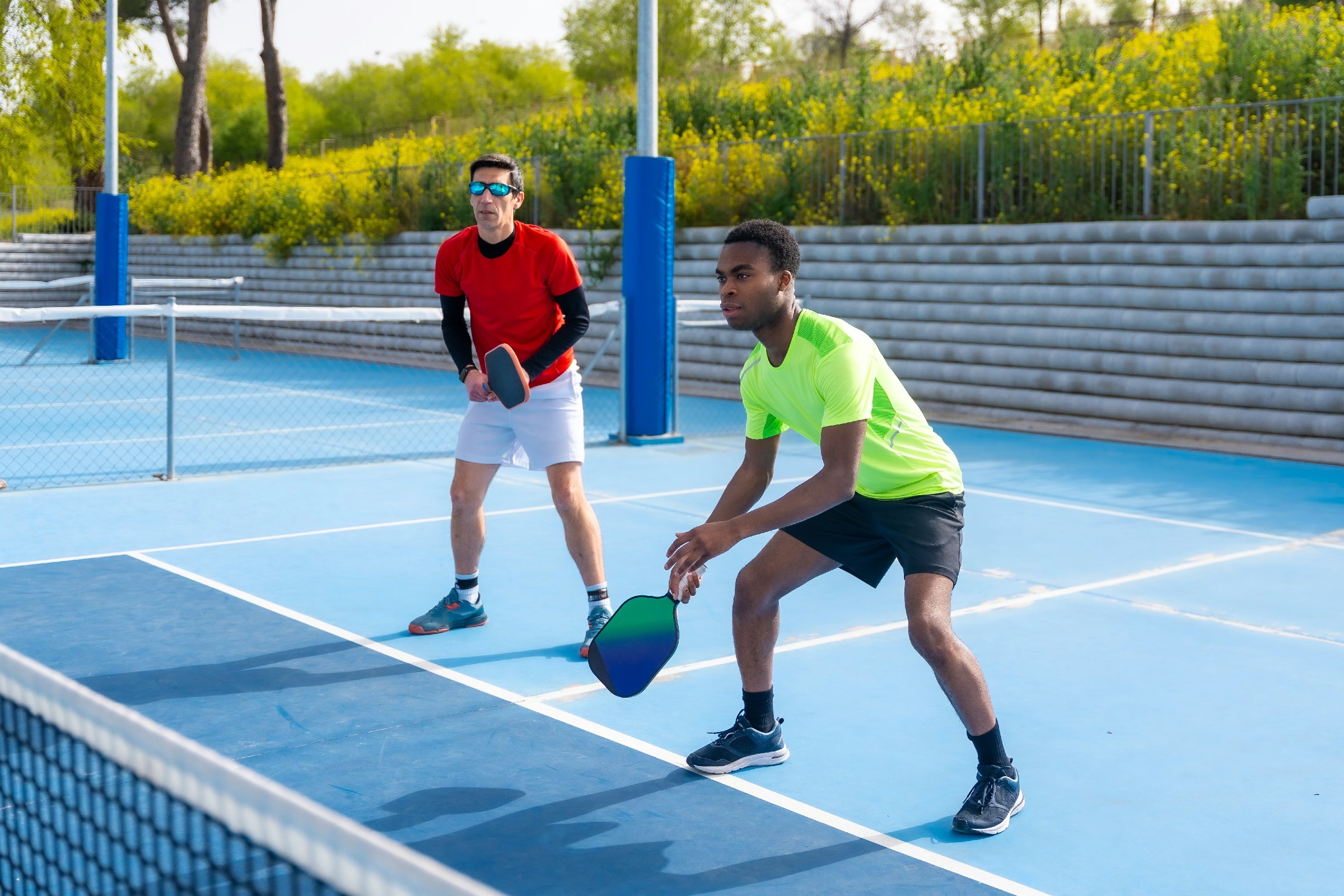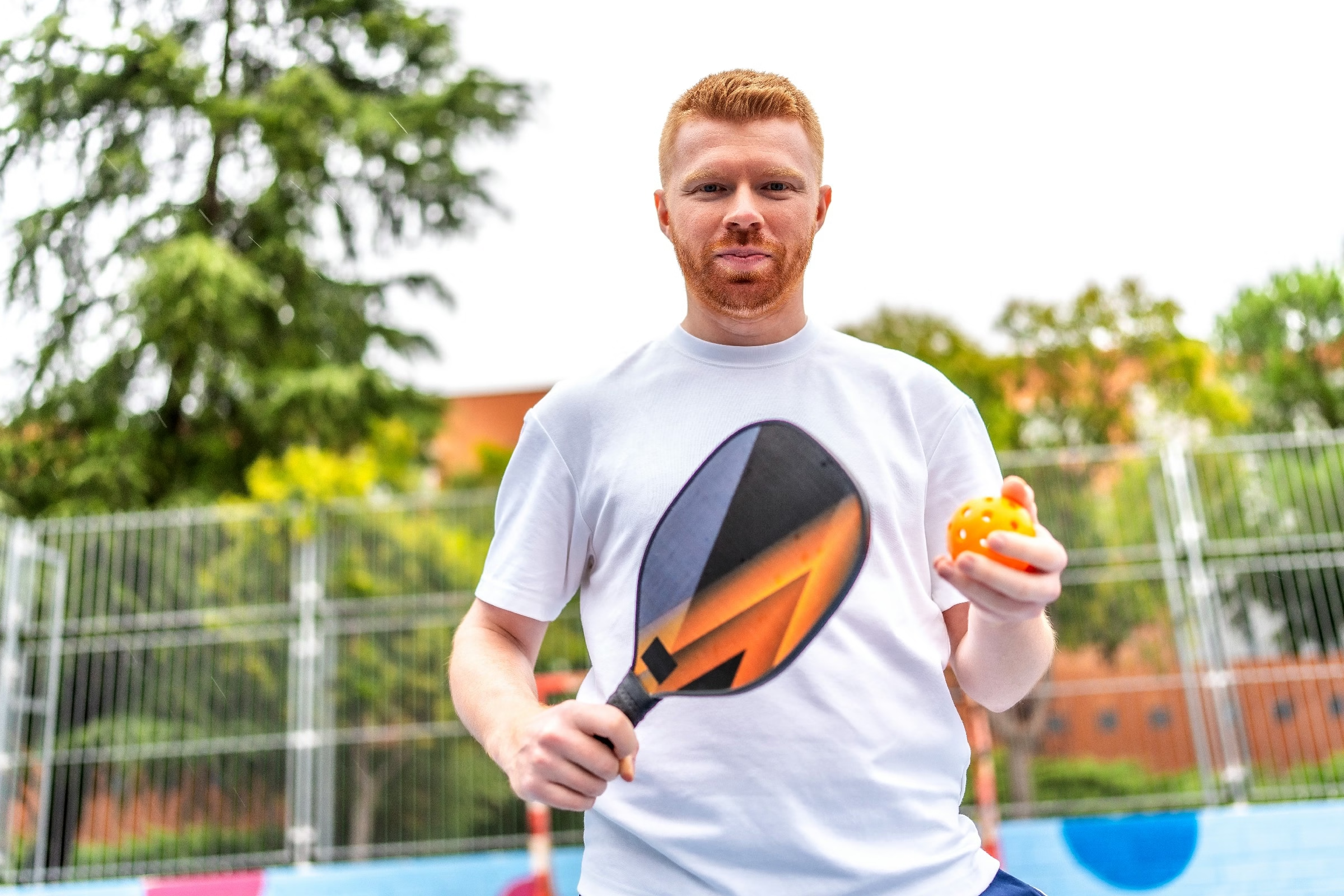Blog
how to play cutthroat pickleball

Introduction: The Thrill of Cutthroat Pickleball
In the vibrant realm of pickleball, where the clash of paddles meets the echo of laughter, a unique twist emerges—enter cutthroat Pickleball. This dynamic variation, played among three individuals instead of the conventional doubles format, infuses a heightened sense of competition and camaraderie into the game. Imagine the exhilarating rush of outmaneuvering not just one, but two opponents as you dart across the court, volleying for supremacy and showcasing your skills. Whether you’re a seasoned player eager for a fresh challenge or a newcomer seeking a fun way to engage wiht this beloved sport, understanding how to navigate the intricate dance of Cutthroat Pickleball can lead to an unforgettable sporting experience. In this article, we’ll explore the essential rules, strategies, and tips to help you master the art of Cutthroat Pickleball, ensuring that every game is filled with excitement and fierce competition. Get ready to elevate your pickleball experience and discover what makes this variation truly captivating!
Table of contents
- Understanding the Unique Dynamics of Cutthroat Pickleball
- Mastering the Rules: Key Guidelines for Fair Play
- Strategic Positioning: Optimizing Your Court Presence
- developing Effective Communication with Partners
- Tactics for Competitive Play: Outmaneuvering Your Opponents
- Post-Game Reflections: Analyzing Performance and Areas for Improvement
- Q&A
- Closing Remarks
Understanding the Unique Dynamics of Cutthroat Pickleball
Cutthroat pickleball introduces a thrilling twist to traditional play, allowing three participants to compete simultaneously.The structure of the game encourages strategic thinking and adaptability, as players not only need to adjust their tactics against their opponent, but also stay vigilant to the actions of the third player. This unique dynamic fosters an habitat rich with unpredictability, where alliances may form temporarily, only to quickly dissolve as players vie for dominance.
Success in cutthroat pickleball relies heavily on a solid understanding of positioning and shot selection. Players should consider adopting a more aggressive or defensive stance based on the flow of the game.Keeping the following in mind will enhance your chances of emerging victorious:
- Anticipate opponents’ moves: Being proactive rather than reactive shifts the game in your favor.
- Control the center: Dominating the center of the court gives you leverage over both opponents.
- Communicate if necessary: While it’s every player for themselves, clear signals can sometimes help establish temporary partnerships.
Moreover, understanding the scoring system in cutthroat pickleball is essential for strategic planning. Players score points only when they serve, which means each service possibility carries immense weight. The following table outlines the key aspects of scoring:
| Action | Points Awarded |
|---|---|
| Winning a rally on your service | 1 Point |
| Allowing an opponent to score on your serve | 0 Points |
| Changing servers after a service fault | -1 point |
By mastering these components of play, participants can embrace the intricate dynamics that define cutthroat pickleball, transforming each match into a masterclass of strategy, skill, and spirited competition.
Mastering the Rules: Key Guidelines for Fair Play
Understanding the intricacies of cutthroat pickleball is crucial for any player aiming to enjoy the game while ensuring fairness and respect on the court.The first guideline is to always play by the official rules established by the USA Pickleball association. This includes knowing the court dimensions, the service area, and the names of key zones such as the non-volley zone, commonly referred to as the “kitchen.” Familiarizing yourself with these rules before competing not only boosts your confidence but also sets a precedent for legitimate play.
Another essential principle is to communicate clearly with your opponents and teammates, especially when it comes to line calls. Agreeing beforehand on how disputed calls will be resolved can prevent misunderstandings and keep the game enjoyable for everyone involved. Be respectful when making calls; if an opponent questions your decision, be open to discussing it rather than reacting defensively. A positive attitude promotes a healthy competitive spirit and builds goodwill among players.
Lastly, it is important to encourage sportsmanship and camaraderie throughout the game. After a point is made or lost, players should acknowledge skilled shots or well-played rallies, nonetheless of which side they are on. This can include simple gestures such as a nod, a thumbs-up, or verbal compliments. To foster this kind of atmosphere, consider these guidelines:
- Shake hands with opponents before and after the match.
- Keep the tone light and positive, even during intense points.
- Be mindful of your body language; avoid expressions that may seem disrespectful.
Strategic Positioning: Optimizing Your Court Presence
When engaging in cutthroat pickleball, mastering your positioning on the court is crucial for maximizing your effectiveness and creating opportunities for victory. Start by ensuring that you maintain a balanced stance—this allows you to react swiftly to the ball and prepares you for both offensive and defensive plays. Consider familiarizing yourself with the dimensions of the court, as hitting the ball exactly where you want can create openings in your opponents’ defenses. concentrate on maintaining a strategic location that allows you to cover the most ground while keeping an eye on both of your competitors.
Utilizing the three distinct areas of the court can be beneficial for outmaneuvering your opponents. Position yourself as follows:
| Area | Strategy |
|---|---|
| Kitchen Zone | Stay ready for volleys and utilize drop shots. |
| Middle Court | Control the pace of the game; mix up your shots. |
| Backcourt | Set up for powerful smashes and deep serves. |
Another essential consideration is your interaction with the other two players. It’s important to watch for patterns of play and adapt your positioning accordingly. If one player is dominant at the net, for instance, you might want to position yourself slightly deeper to allow for more reaction time against their aggressive shots. Additionally, keep in mind the importance of using fake-outs and deceptive shots to keep your opponents guessing. By altering your shots frequently, you’ll maintain the upper hand and create unpredictable rallies, ultimately leading to advantageous setups for yourself.
Developing Effective Communication with Partners
In the fast-paced environment of cutthroat pickleball, effective communication with your partners is crucial for success on the court. Establishing a clear and concise method to convey your strategies and intentions can substantially impact your team’s performance. Consider adopting a system of hand signals for rapid messages that don’t disrupt the flow of the game. Simple gestures can indicate plans to attack,defend,or shift positions,allowing for seamless interactions during intense rallies.
moreover, fostering open dialog before and after matches can definitely help create a strong partnership. Discussing individual strengths and weaknesses, as well as preferred styles of play, enables team members to support each other effectively. Establish a routine for this communication, such as a brief huddle after each game, to share feedback and celebrate victories. this enables both players to develop a deeper understanding of each other’s gameplay, ultimately leading to refined strategies on the court.
consider implementing the “Call It Before You Fall It” method, where players verbally commit to their shots or intentions. This practice minimizes confusion and reduces the chances of collisions or misplays. It’s beneficial to create a list of essential phrases or keywords that both partners can agree on, such as:
- “Mine!” – Signifies that you will take the shot.
- “You!” – Indicates your partner should take the shot.
- “Switch!” – Commands a change in positioning.
Utilizing these strategies helps build a robust communication framework that can significantly enhance teamwork in competitive matches. By nurturing effective exchanges, partners can improve their synergy and ultimately elevate their game performance.
Tactics for Competitive Play: Outmaneuvering Your Opponents
In cutthroat pickleball, where every point counts and alliances are fragile, developing your tactics to outmaneuver opponents is crucial for securing wins. One effective strategy is to constantly analyze your opponents’ weaknesses. As a notable example, observe their preferred shots and positioning on the court. Look for patterns in their gameplay, such as a tendency to favor one side or struggle with particular shots. By exploiting these weaknesses, you can create opportunities to score while keeping your adversaries on edge.
Another key tactic is to vary your shots and placement.A predictable playstyle can easily be countered by savvy players. Rather, implement a mix of strategic serves, unexpected spins, and precise placements. utilize the entire court space to keep opponents guessing and out of rhythm. Specifically consider using angles to open up shots, and don’t hesitate to drive the ball deep into your opponent’s court.By incorporating elements like a well-timed drop shot or a powerful volley, you can easily disrupt your opponents’ momentum.
remember the importance of court positioning and movement. Stay light on your feet and be prepared to shift your position rapidly as the game progresses. Establish a strategic position that allows you to cut off your rival’s shots while staying ready to defend against attacks. Engage in rallies with an offensive mindset, and always be aware of your surroundings. This keen sense of awareness will allow you to anticipate your opponents’ next moves and react accordingly, increasing your chances of gaining the upper hand.
Post-Game Reflections: Analyzing Performance and Areas for Improvement
After an exciting game of cutthroat pickleball, it’s essential to take a moment to reflect on the performance and pinpoint areas for growth. Each player brings unique skills and strategies to the court, contributing to the dynamic nature of this competitive format. Analyzing individual performance through various lenses can yield valuable insights:
- Serving Consistency: Evaluate the effectiveness of your service game.Were your serves powerful and well-placed? Or did you struggle with faults?
- Positioning and Movement: Consider how well you moved around the court.Were you able to anticipate opponents’ shots and position yourself effectively?
- Shot selection: Reflect on your choice of shots. Did you opt for high-risk plays that perhaps backfired, or did you choose more strategic placements that led to successful points?
Statistically analyzing points won and lost can provide a clearer picture of what strategies worked and which didn’t. The following table summarizes key performance metrics that can be monitored during a cutthroat game:
| Metric | Points Won | Points Lost |
|---|---|---|
| Serve Success Rate | 20 | 5 |
| Net Plays | 15 | 10 |
| Unforced Errors | 3 | 12 |
by using these reflections and metrics as a guide, players can identify specific areas to improve their game.Continuous practice and adjustment of strategies based on feedback will not only enhance individual skill sets but also contribute to a more competitive and enjoyable cutthroat experience overall. Emphasizing practice sessions that focus on weaknesses—be it serving accuracy or shot choices—can instill greater confidence and proficiency for future matches.
Q&A
Q&A: How to Play Cutthroat Pickleball
Q1: What is cutthroat pickleball?
A1: Cutthroat pickleball is a dynamic variation of the traditional game that adds an extra layer of intrigue and competitiveness.Played with three players rather of the usual two or four, it turns the court into a thrilling arena where alliances can shift with every volley. Each player competes individually to score points against the others,making strategy and quick decision-making essential.
Q2: What equipment do I need to play cutthroat pickleball?
A2: To dive into the world of cutthroat pickleball, you’ll need the same equipment as standard pickleball. This includes a pickleball paddle, a regulation-sized pickleball, and a court that’s either indoors or outdoors. Don’t forget comfortable athletic wear and a pair of non-slip shoes to keep you agile on your feet!
Q3: How do I set up for a game of cutthroat pickleball?
A3: To set up a cutthroat game, you’ll need just three players. Choose a standard pickleball court, which is 20 by 44 feet.The player who serves will stand in the right service box, while the other two rotate positions on the opposite side. Use the traditional scoring system: points can only be scored by the serving player, and after each rally, the serve rotates to the next player.
Q4: How is the scoring system different in cutthroat pickleball?
A4: In cutthroat pickleball, scoring follows a few simple rules. Only the server can score points; if the server loses the rally, they do not score, and the serve passes to the player on their left.If the server wins, that player gets a point. The first player to reach 11 points (or another pre-determined score) wins the game, unless a clear margin of 2 points is established.
Q5: What are some strategies for winning at cutthroat pickleball?
A5: Winning at cutthroat pickleball hinges on both offense and defence.Focus on reading your opponents’ playing styles—this can help you anticipate their shots and respond effectively. Consider forming temporary alliances, but be ready for those to change! Control the center of the court, play to your strengths, and don’t forget to mix up your shots to keep your opponents guessing.
Q6: Are there any etiquette rules I should follow?
A6: Absolutely! Good sportsmanship is key in cutthroat pickleball. Always call your own faults and games honestly. Be respectful of your opponents and remain positive, even when the competition heats up. Consider discussing any house rules or scoring variations before the game to ensure everyone is on the same page.
Q7: Can cutthroat pickleball be played casually?
A7: Definitely! Cutthroat pickleball is versatile. While it can be fiercely competitive, many enjoy it in a casual setting as well. It’s a great way to spend time with friends, foster some kind rivalry, and even work on your skills. Just remember, regardless of the level of competition, the goal is to have fun!
Q8: Where can I find others to play cutthroat pickleball with?
A8: Look for local community centers, parks, or recreational facilities that feature pickleball courts. Many clubs and online platforms have groups dedicated to pickleball; joining these can help you meet fellow enthusiasts willing to try cutthroat.Social media and meetup apps are also great resources for finding or organizing games!
Embrace the fierce and unpredictable spirit of cutthroat pickleball, and prepare for some exciting matches ahead!
Closing Remarks
As we wrap up our exploration of cutthroat pickleball, it’s clear that this dynamic twist on the classic game adds an exciting layer of strategy and competition. Whether your a seasoned player or a curious newcomer, embracing the fast-paced nature of cutthroat pickleball can lead to fun, laughter, and new friendships on the court.Remember, it’s not just about winning—it’s about enjoying the game and the camaraderie that comes with it. So gather your friends, set up that court, and get ready to unleash your competitive spirit in a game that promises unpredictability at every turn. Happy playing!












